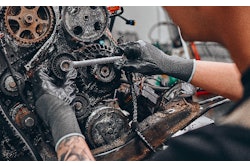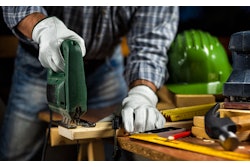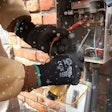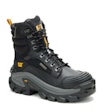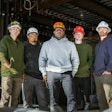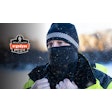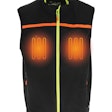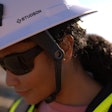
Heated gloves are designed and manufactured to provide warmth and comfort – and therefore greater work efficiency – when working in cold weather conditions. They are typically designed to maintain good mobility and dexterity, enabling those wearing them to perform tasks requiring fine motor skills without having to remove the gloves.
The gloves are equipped with heating elements typically powered by batteries which generate heat to keep hands warm. The heating elements are often crafted from carbon fiber or thin, flexible wires integrated into the heated gloves. The heating elements generate and distribute heat throughout the glove, particularly in the areas of the fingers and back of the hands.
The outer shell of heated gloves is often made from materials such as nylon or leather to help provide durability and protection from the elements.
Battery-powered Heat
Heated gloves are usually powered by rechargeable lithium-ion batteries. The battery capacity and runtime depend on the specific gloves and settings and typically last for several hours on a single charge. Raw battery capacity as measured in milliamp hours (mAh) helps to determine how long a particular pair of gloves will remain heated.
Gloves with removable, replaceable battery packs enable those wearing them to swap them out as needed. The battery voltage is low enough as to not lead to electrical shock.
Temperature control is another element of heated gloves, with many offering multiple heat settings enabling those wearing the gloves to adjust the heat level in response to changing weather conditions. That also preserves battery life.
Some brands feature indicator lights notifying users when the glove is actively heating.
Durability
Heated gloves may feature insulation to help trap the generated heat and provide additional warmth, with the type and amount of heat varying among different glove models. Some heated gloves are designed to be water-resistant or waterproof and may also feature windproof materials to help protect against cold wind.
Waterproofing measures can make clothing less breathable, trapping body sweat inside and creating odors. A waterproof layer on the outside and breathable fabric on the palm area can help mitigate that challenge.
Some gloves are heated not by batteries, but through chemical activation, such as chemical air-activated hand warmers. These may be disposable, necessitating they be restocked on an ongoing basis after their useful life.
Some heated glove brands integrate features such as impact protection in the area of the knuckles and back of the hand, high-visibility stripes, abrasion resistance and anti-slip material.
A touchscreen-capable finger in some gloves is made from copper fiber conductive yarn that interacts with electrical currents produced by touchscreens to make it easier to use a touchscreen without removing the gloves. The area is small enough so that the warmth of the glove is not significantly affected.
Functionality
Other features that can be found on heated gloves include a drawstring or other design that secures the gloves tightly around the wrist as to not allow heat to escape or cold to enter under the opening of the heated glove.
Check with the worksite’s safety manager to ensure the selected gloves meet safety standards. The Occupational Safety and Health Administration (OSHA) notes that some factors influencing the selection of protective gloves for a workplace include the type of chemicals handled, the nature of contact (such as total immersion or splash), the duration of contact, and the area requiring protection (hand only, forearm, arm).
Other factors include grip requirements (dry, wet or oily), thermal protection, size and comfort and abrasion/resistance requirements.
Things to Consider When Choosing Heated Gloves
Those with medical conditions such as arthritis and blood circulation issues may want to check with a physician regarding a suitable heated glove selection.
Read instruction manuals to understand how to operate and maintain heated gloves. Proper storage ensures longevity and functionality. OSHA recommends all protective gloves be inspected before each use to ensure that they are not torn, punctured, or made ineffective in any way.
While a visual inspection will help detect cuts or tears, a more thorough inspection can be conducted by filling the gloves with water and tightly rolling the cuff towards the fingers to help reveal any pinhole leaks. Gloves that are discolored or stiff may indicate deficiencies caused by excessive use or degradation from chemical exposure. Discard and replace any heated gloves with impaired protective ability.


